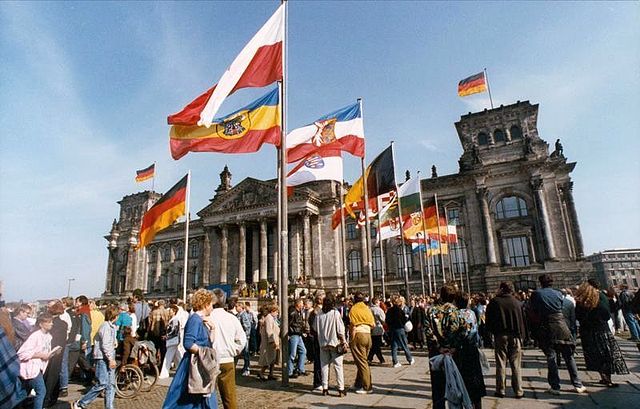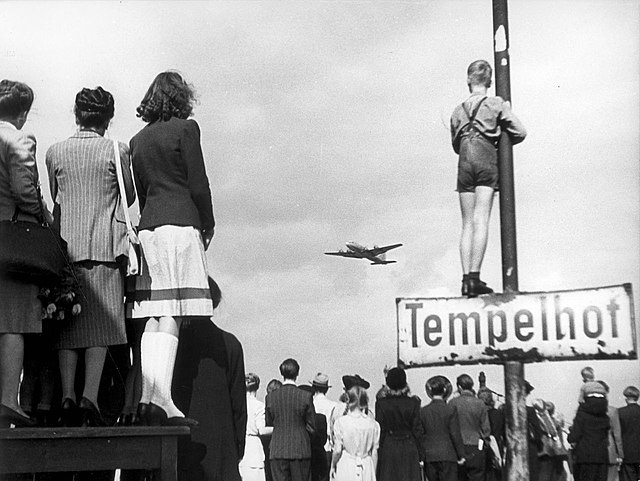The East German mark, commonly called the eastern mark in West Germany and after reunification), in East Germany only Mark, was the currency of the German Democratic Republic. Its ISO 4217 currency code was DDM. The currency was known officially as the Deutsche Mark from 1948 to 1964, Mark der Deutschen Notenbank from 1964 to 1967, and from 1968 to 1990 as the Mark der DDR. The mark (M) was divided into 100 Pfennig (pf).
East German mark
M10 coin issued in 1981 to commemorate the 25th Anniversary of the National People's Army
M 10 coin issued in 1986 to commemorate the 100th Anniversary of the birth of Ernst Thälmann
Unloading sacks of coins from the Staatsbank for destruction, 1990
German reunification was the process of re-establishing Germany as a single full sovereign state, which took place between 9 November 1989 and 15 March 1991. The "Unification Treaty" entered into force on 3 October 1990, dissolving the German Democratic Republic and integrating its recently re-established constituent federated states into the Federal Republic of Germany to form present-day Germany. This date has been chosen as the customary German Unity Day, and has thereafter been celebrated each year as a national holiday in Germany since 1991. As part of the reunification, East and West Berlin were also de facto united into a single city, which eventually became the capital of Germany according to the Unification Treaty.
Germans stand on top of the Wall in front of the Brandenburg Gate in the days before the Wall was torn down.
1990 Day of German Unity, with flags of all German states at the Reichstag building in Berlin, Germany
An East German political event on 21 April 1946: Otto Grotewohl (right) and Wilhelm Pieck (left) seal the merger of two parties, SPD and KPD, to form the SED, a communist party that would dominate the future East German state, with a symbolic handshake. Walter Ulbricht is seated in the foreground to the right of Grotewohl.Avraham Pisarek
Berlin blockade (1948–1949)








